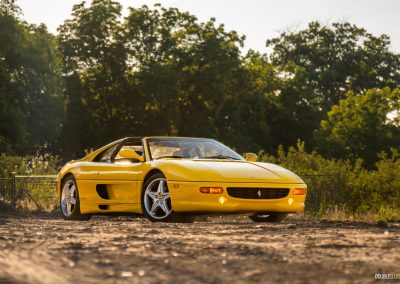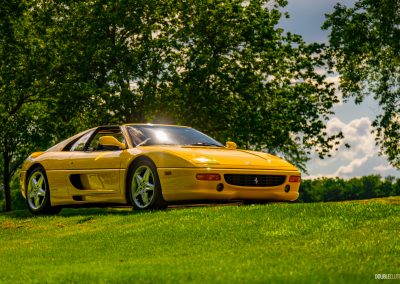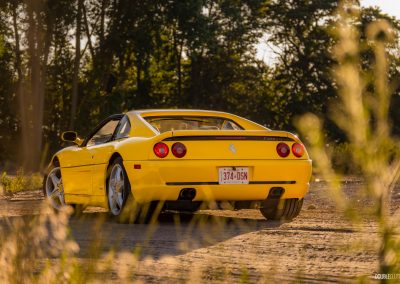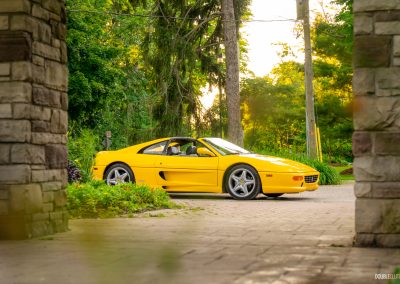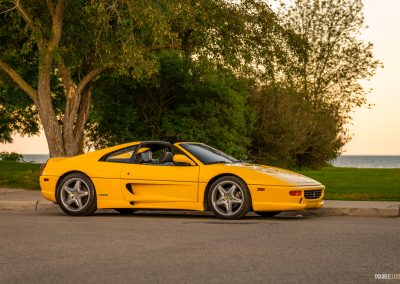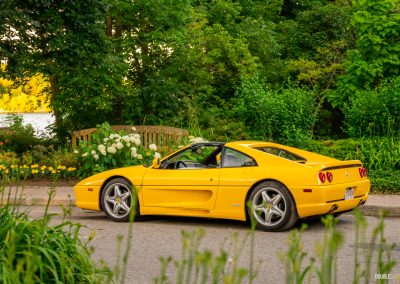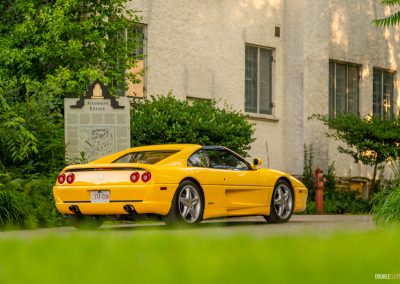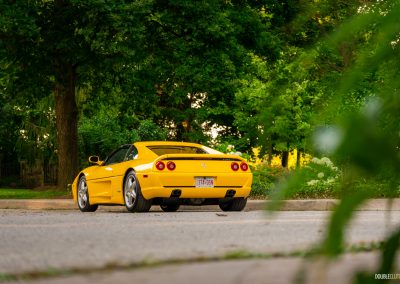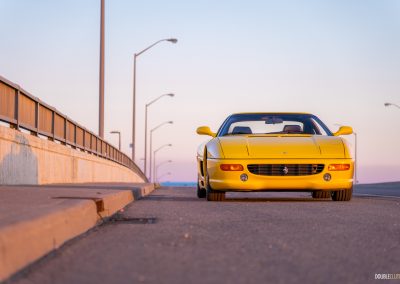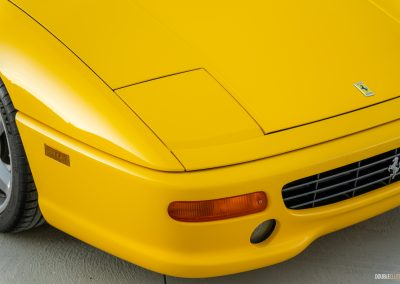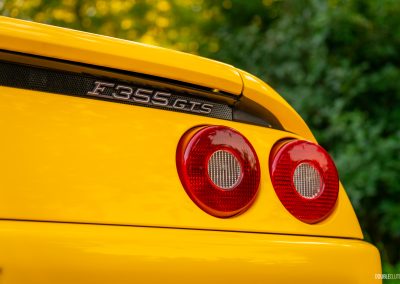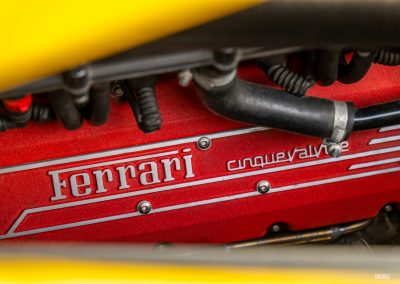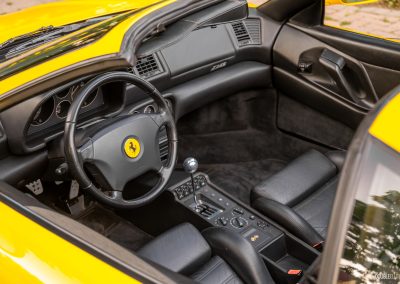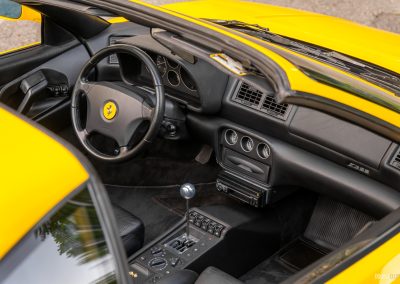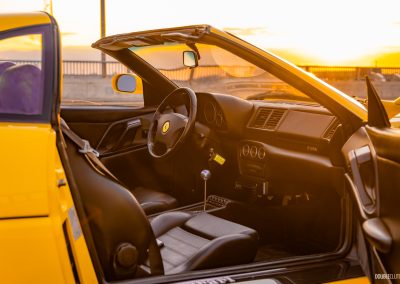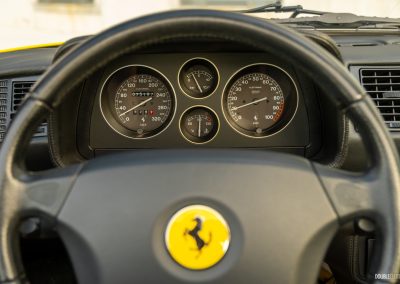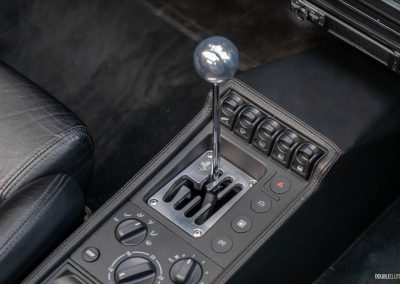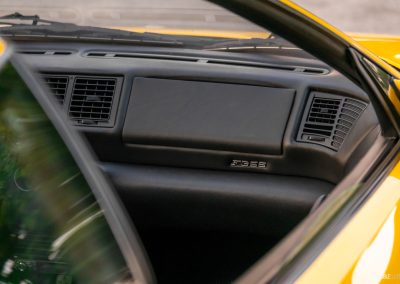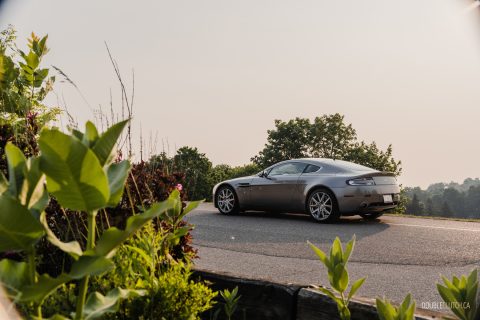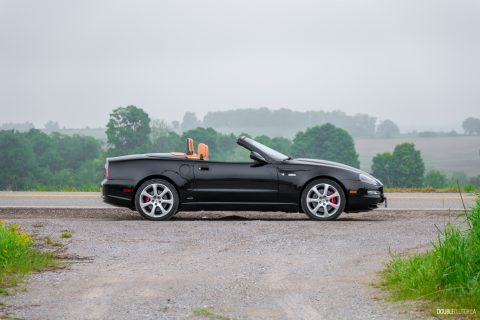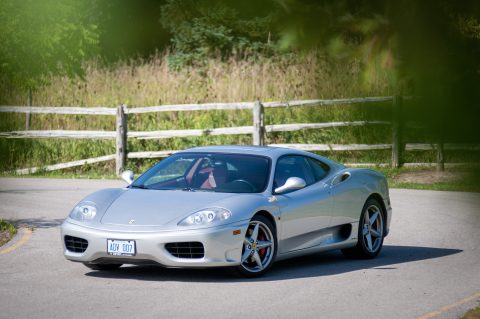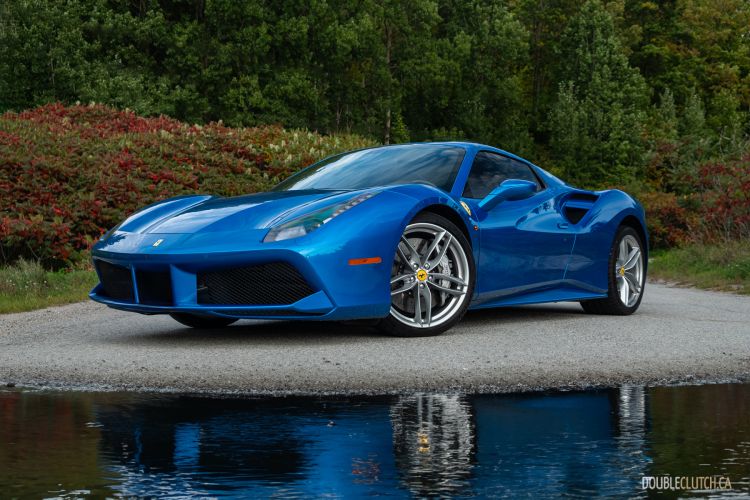I’m sitting here late at night and half in the bag, going through the catalogue of my liked songs on Spotify, dreaming about driving an exotic sports car — just like I used to when I was a teenager. I haven’t done this in years. Changing careers and working with and around cars all the time has seriously desensitized me, to a point where I barely enjoy driving. I think about driving the same way a porn star probably thinks about sex; it’s pretty alright, sure, but it’s been done. It’s just work. It really has to be something special to rise above that.
That something special — the exotic sports car I’m dreaming about — is this 1997 Ferrari F355 GTS. It might be the best car I’ve ever driven.
I feel like I need to qualify that. I’ve driven a lot of incredible cars, icons of the craft new and old. This isn’t my first time experiencing a Ferrari, either. It’s not like this F355 popped my exotic-car cherry and left an outsized impression. I know what I’m talking about; I’m coming at this with a measured hand and a burden of context. Honestly, at this point, I kinda don’t like exotic cars because of all the pomp, circumstance, and undeserved hype that comes with them. But as I’ve been learning, Ferraris — and specifically, this Ferrari — are actually that good.
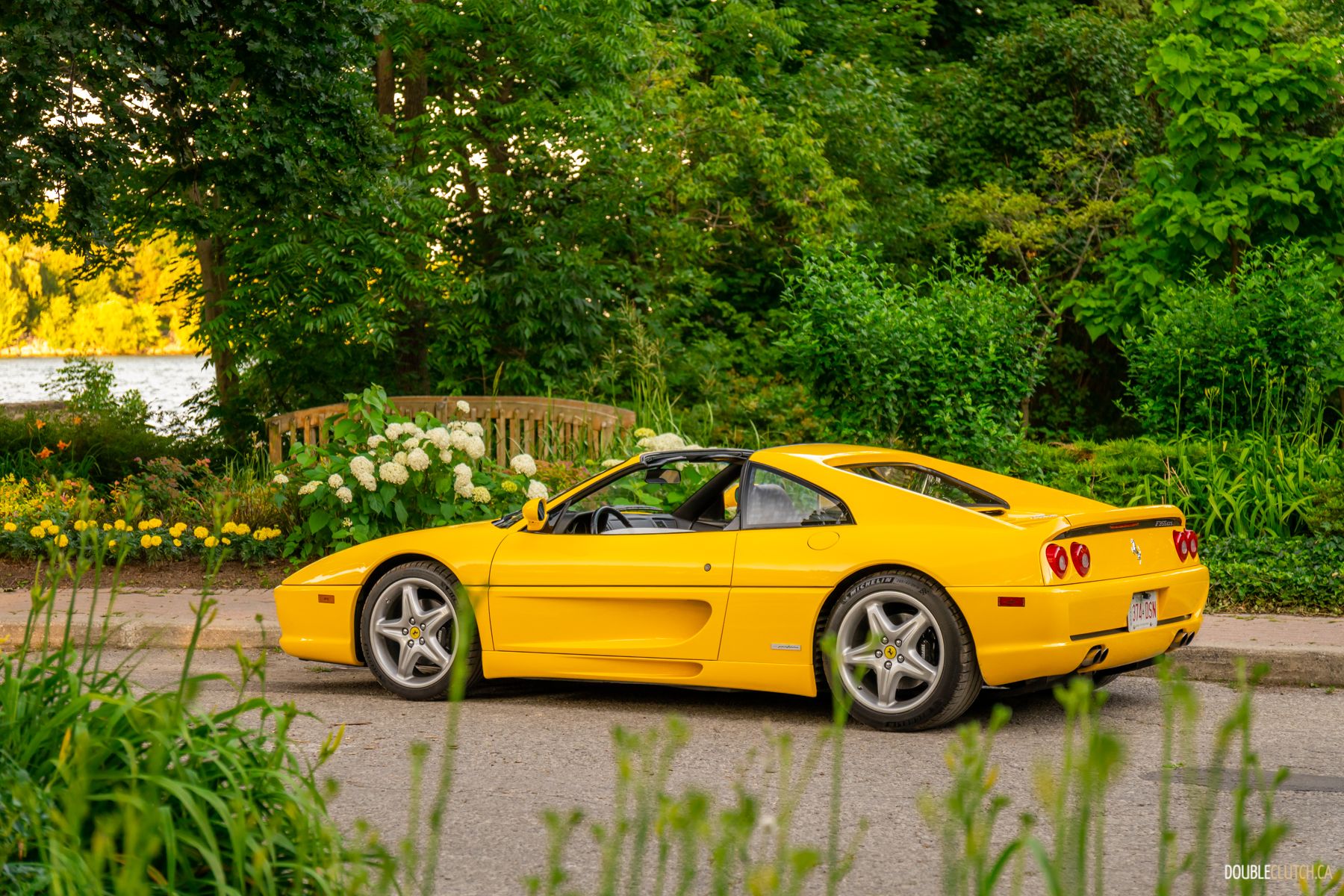
Sexy is the word that comes to mind with this car. I don’t normally like that word when describing cars. I think anthropomorphizing cars with eroticism is more than a little weird — and a very tired cliche — but nothing else is more apt here. The car oozes seduction from every seam, from its exaggerated 18-inch starfish wheels to its gaping inlets gouging its profile; from its veiled headlights to its slinky targa top silhouette, all draped in look-at-me Giallo Modena paint.
It’s the vehicular equivalent of Vesper Lynd from Casino Royale, about as close as you can get to being a walking scandal while still being a masterclass in good taste. Style only goes so far, though. You can be gorgeous all you want, but it won’t amount to bona-fide knockout status if you don’t have the confidence and charisma to back it up. That’s where the F355 shines over … well, almost everything. Not the least of which being other Ferraris.

A lot of people will point to the 360 Modena as being the first good Ferrari, the first vehicle to roll out of Maranello that was an honest-to-God decent car in a modern sense. It had sound ergonomics, with the pedals being placed directly in front of the driver, respectable interior materials that didn’t turn into chewed-up gum after a few years, and a maintenance schedule that didn’t require yanking the engine out of the car on a routine basis.
The F355 is a middle child, a hybrid of new and old, a very rare best of both worlds in an industry where it feels like only the worst get married. See, this car came at a pivotal time in Ferrari’s history: they just had their butt very publicly handed to them by Honda. Not Porsche or Lamborghini, but the little Japanese company that made quirky economy cars had come out of nowhere and dragged them to school, kicking and screaming.
The Acura NSX famously outran the Ferrari 348 in instrumented testing around Laguna Seca with all the ease-of-use you’d expect of a Honda, plus niceties like pedals mounted directly in front of the driver, and an engine that was designed to stay in the car its whole life. It’s not even like Honda gave up a lot of passion on the quest to build a better car; the NSX looked as sinuous as anything to come off an Italian easel, and it sounded so very much better than its V6 engine had any right to. It was a shot heard round the world, and Ferrari took it personally.
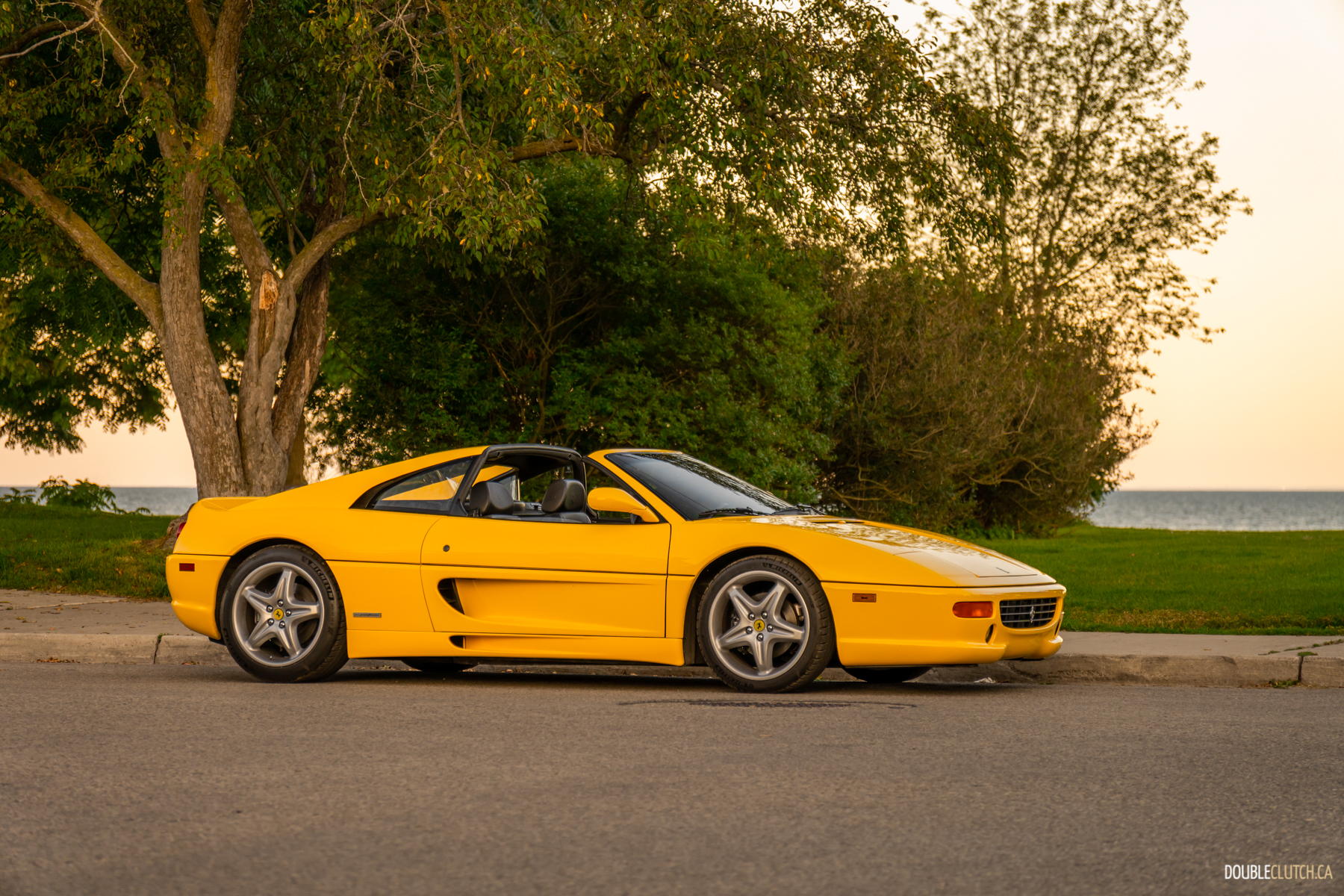
Ferrari’s then-new and now-legendary CEO Luca De Montezemolo commissioned the F355 as a targeted response to the NSX. It would take them until the 360 to engineer what might actually pass as a good car, but for now the mission statement was to turn the 348 into a car so captivating that it overshadowed any technical prowess Honda boasted about, what with their aluminum-spaceframe-this and VTEC-whatever-that.
Outside of the F355’s dramatic style, one of the biggest directives was that the updated V8 engine had to sound incredible. Honda was one of the first companies ever to acoustically tune an engine to make sure it sounded exactly how they wanted, and the result pretty comfortably stands as one of, if not the best-sounding six-cylinder engine ever built. It was a serious flex, and Ferrari wanted that for themselves.
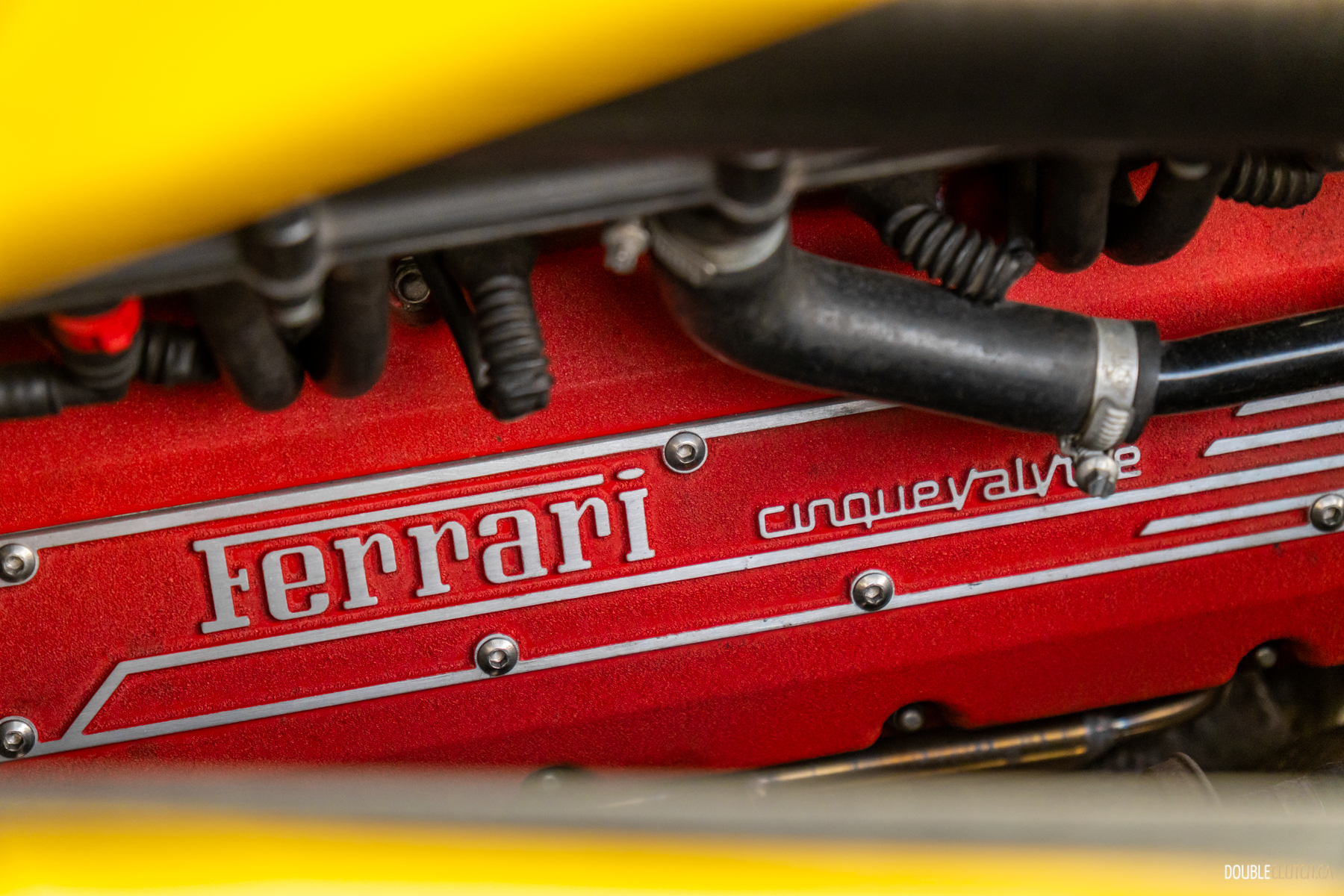
The result was the F355’s five-valve — or Cinquevalvole — cylinder heads. These necessitated a ridiculous additional production cost with their angle-ground quad camshafts, and whose performance benefit was shortly found to be totally null and void next to a conventional four-valve setup with a slightly larger bore, exactly as seen on the 360. But there’s no denying it sounded like nothing else on Earth, before or since. Ferrari was so proud of this design that they abandoned their decades-old naming convention to highlight this car. The 206, 246, 288, 308, 328, and 348 all had the first two digits denote displacement, and the last represented cylinder count. And then came along the F355: 3.5-litre, 5-valve.
Ferrari had every right to be proud of this car. It’s a triumph. It radiates sensuality and exists exclusively for pleasure, cost be damned. It’s an intimidating thing to behold; even opening the door requires leaning over and grasping an unseen handle hidden away under the veil of an intake. The very act of entering the car requires bold intimacy, demanding you know what you’re doing with your hands by feel alone. It feels like reaching up a skirt and perversely being rewarded for doing so.
I wasn’t kidding earlier. This car is sex.
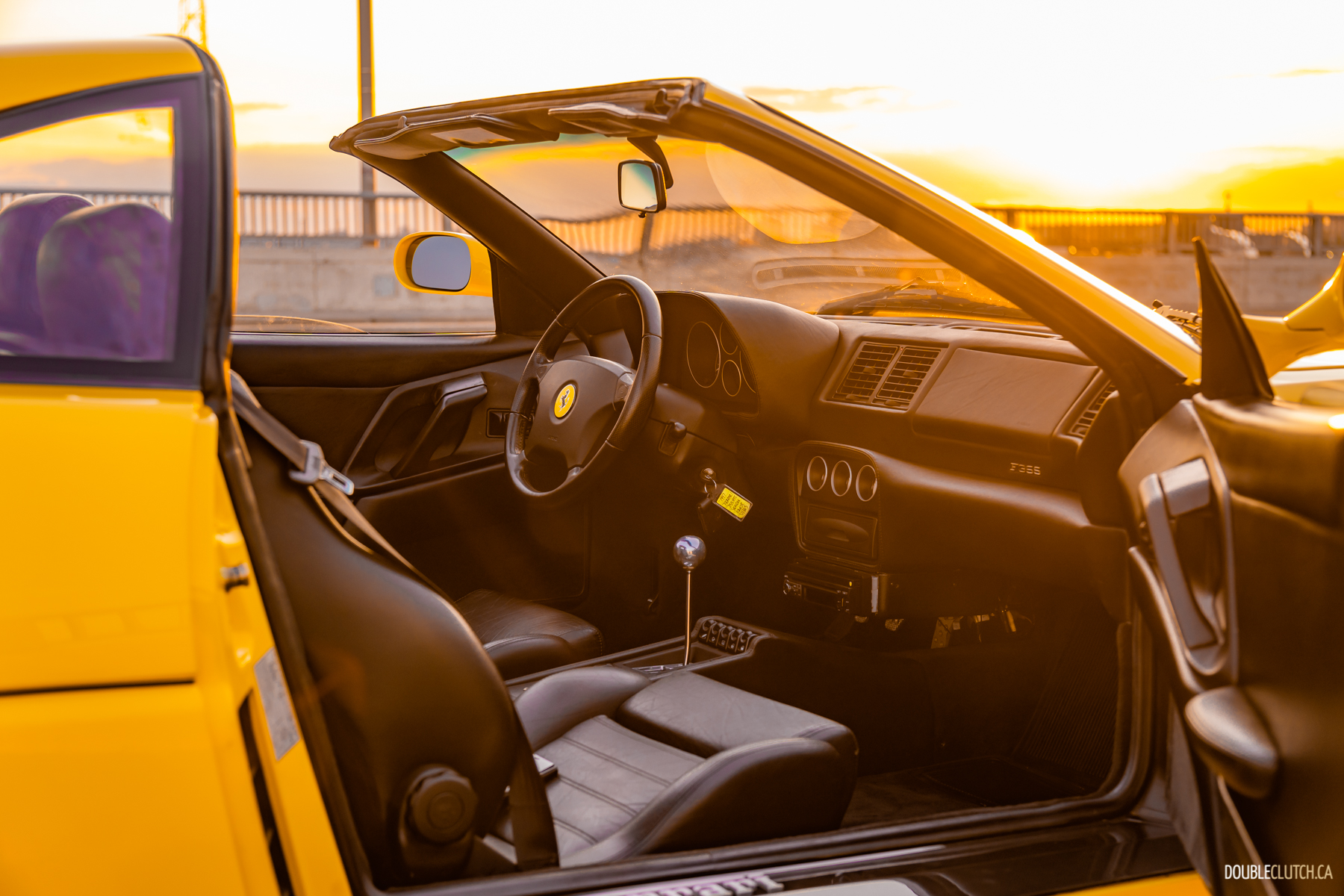
Sink yourself into the low-slung seat and get situated. This is from an era when fun came first, with comfort coming a distant second. If you have big feet, this will be an awkward dance; I also felt the steering shaft grinding against my toe under the dashboard. In classic Italian fashion, the driving position rewards short legs and long arms, of which I have neither. But I wasn’t gonna let myself be kicked out of bed that easily.
The legendary gated shifter so much ado has been made about is, and I say this with love, objectively awful. It defies everything the motoring press likes in a modern shifter, with a notchy, clunky, and heavy action. It doesn’t have the soft detents of a BMW, the assisted notchiness of a Mustang, the rifle-bolt action of a Honda, or the slick action of a Miata. The F355’s shifter feels like your first time over and over again; it’s awkward, fumbling, and makes weird noises until you grow some confidence. Then all of the sudden, it makes sense.
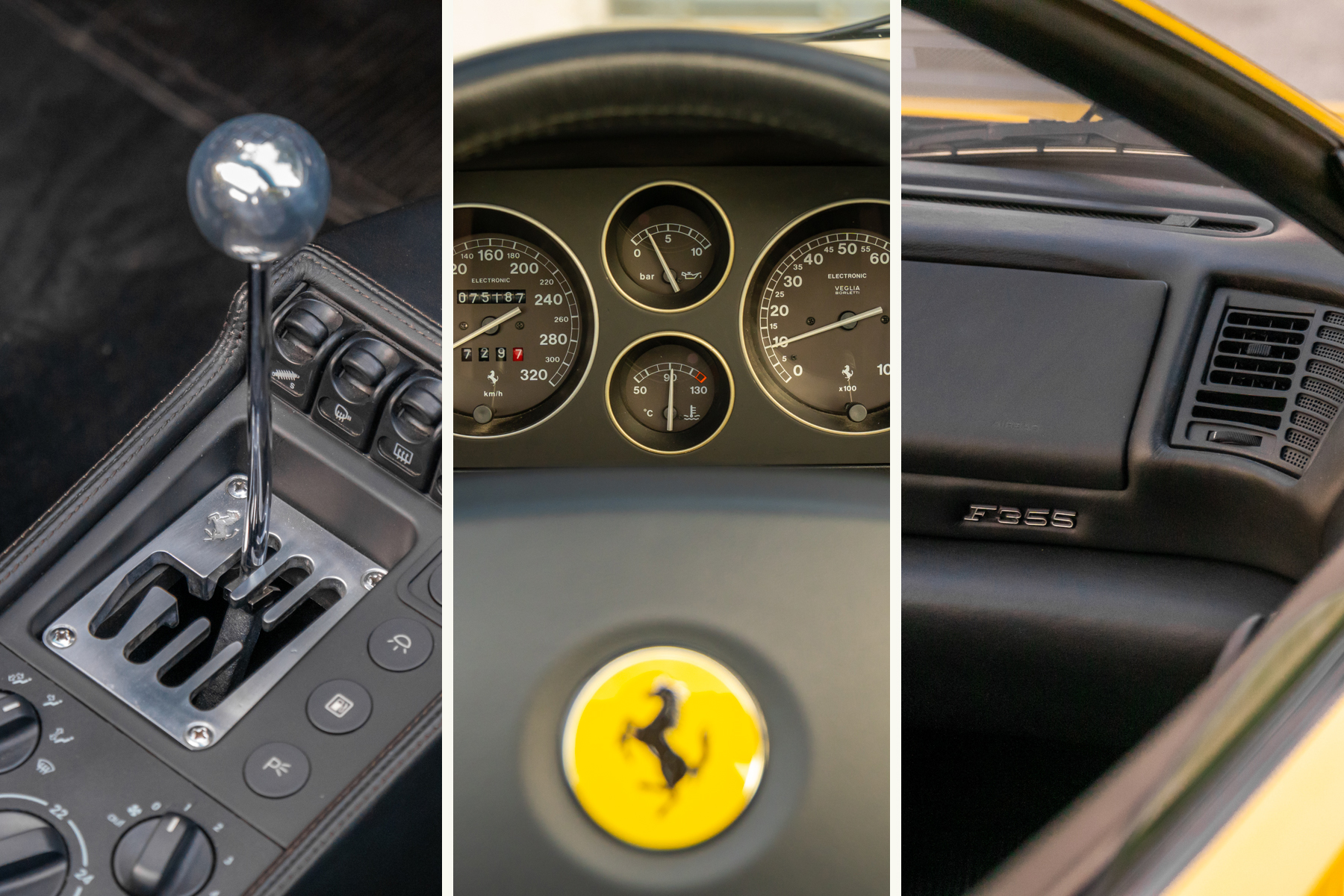
Ferraris all have a very particular rhythm, a very specific cadence they respond to. They demand confidence; you have to hustle but never hurry. The clutch is long-ish and heavy, the gearbox is almost too intimate for its own good, and the engine is easily excited. Everything communicates to you and wants you to be deliberate, to act with intention, and relish every moment.
Being a V8, it has a decent amount of torque and is surprisingly flexible at low speeds, comfortably able to trundle along just above tickover without much fuss. This was one of the first Ferraris that wasn’t entirely a chore to drive at low speeds. While it might be complacent enough around town, you can almost sense its discontent through its deep, murmuring idle; this a motor that loves to rev, taking on a harmonic quality from 3,500 rpm onward that just gets better and better all the way up to it’s mighty 8,500-rpm redline.
This car sounds incredible. It’s unreal. The noises it makes can’t be real. There’s no way any engine can possibly make noises like this in response to me. But it does, and it does them well. Its almost harsh bass note of an idle gives way to a gorgeous resonance on its way upward, where it builds into a shriek that’s brimming with fury and passion. It may sound exaggerated, but no one’s faking anything here. The awkward shifter makes all the sense in the world now as it gives up any pretension of resistance and eagerly slides into the next gear, beginning the whole thing over again.

The chassis is similarly sinuous, tantalizing you with its wiles. In the absence of cars with good steering feel, most enthusiasts have become hyper-fixated on steering feel to the point that I feel they’ve made it a meme, and they’re missing the forest through the trees. It’s tight and talkative, and has a slightly slow-ish ratio that the uninitiated might be tempted to call relaxed these days. The F355 encourages you to feel not just with your hands but your whole body, sensing what the chassis is telling you through your hips as much as your fingertips.
It’s neutral, with a very slight predilection towards understeer that can easily be dialed out via the skinny pedal. It’s edgy and lively, without being nervous. Its talkative turning ability guides you towards exactly what’s needed for a good time, with the glorious engine providing incentive to keep it on a rolling boil where it’s happiest. With 375 horsepower on tap, the F355 isn’t fast in a modern context, but it’s plenty to give you the best ride of your goddamn life, fast enough to feel like you’re contending with real forces but not so fast as to feel wasted on you.
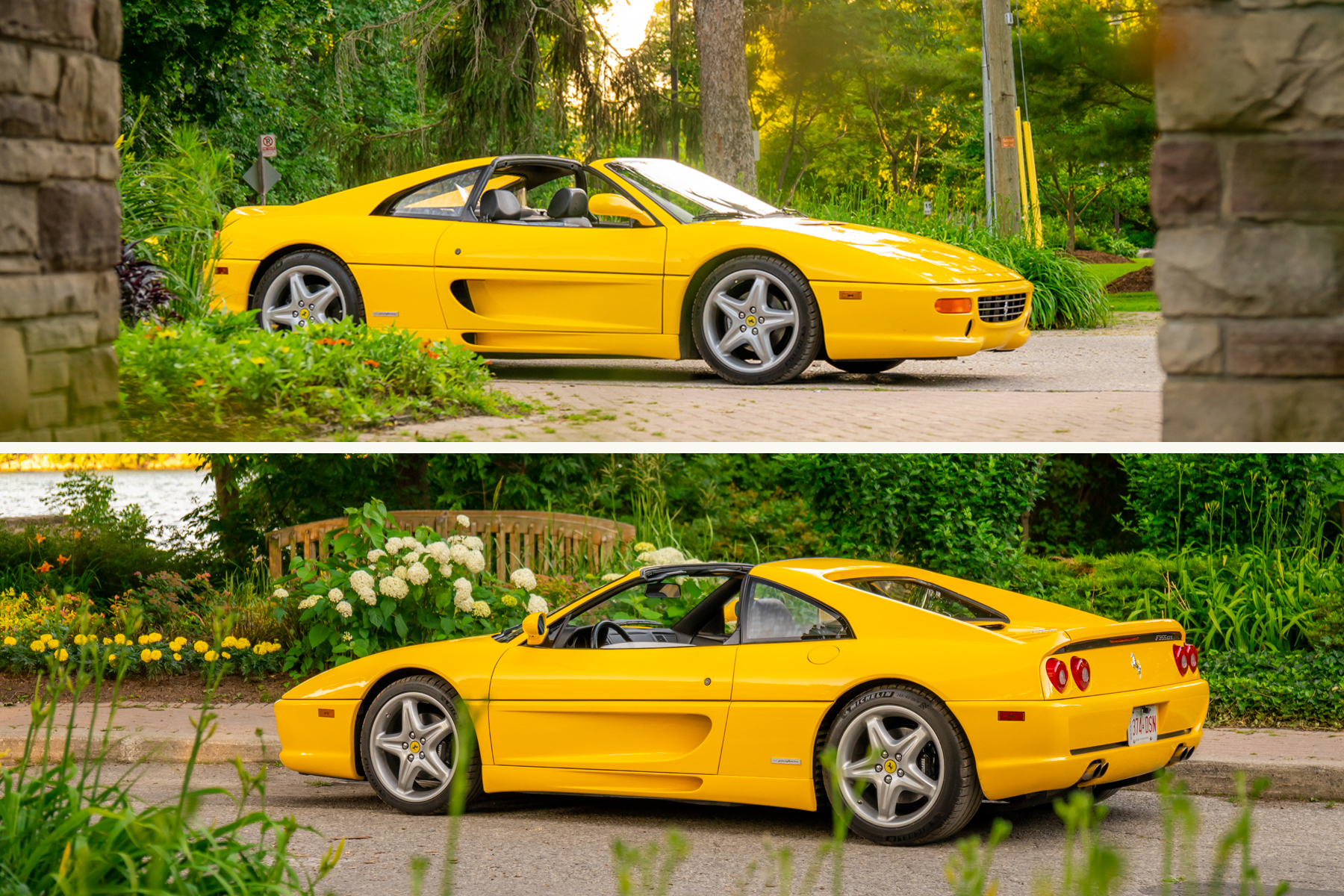
That’s where the 1997 Ferrari F355 GTS stands alone — it’s approachable. It’s wild that a mechanized nymphomaniac can be that, but that’s what Ferrari pulled off here. Instead of intimidating you into feeling like you can’t be a porn star, this car shows you how to f—uhh, make love like one. It’s so costly to purchase as to be irrelevant and even then, it’ll do its damnedest to bankrupt you at every chance it gets. And just like the archetypal seductress that’s got you wrapped around her finger, she’ll make you believe it’s all worth it.
And it most certainly is. I enjoy driving again.

